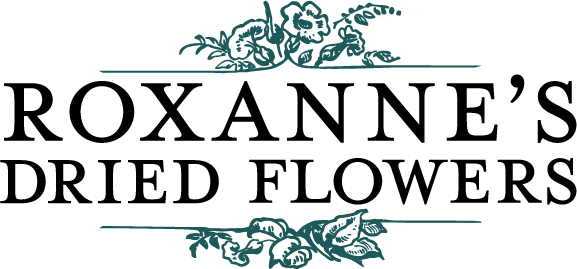
When to Harvest Flowers for Drying
Drying flowers is an art of timing. Harvesting blooms at just the right stage ensures the best color, form, and longevity in your dried arrangements. Not all flowers dry well, but many do—here are some that hold up beautifully, along with tips and timing cues to guide your harvest for lasting beauty.
General Tips:
🌞 Timing is everything: Harvest in the morning, after the dew has evaporated but before the sun is too strong.
📦 Bundle smartly: Use two tight rubber bands to secure stems. As the flowers dry, the bands will stay snug as the stems shrink.
🌬️ Hang to dry: Choose a dark, dry, well-ventilated space. Hang in small bunches upside down for best results.

🌱 Cut Before Fully Open These flowers benefit from being harvested in bud or just as they begin to open:
-
Roses: Cut as buds begin to open and take shape, before reaching full bloom.
-
Oregano: Snip just as the flowers start to turn purple, before they lighten.
-
Lavender: Harvest when buds are tight and just before the tiny blossoms open.
-
Peony (Double): Cut as the center softens and stamens are visible, but before the seed pod appears.
-
Peony (Single): Cut once fully open with visible yellow anthers, before petals reflex.
-
Strawflower: Pick in the morning as the outer petals begin to open, while the center remains closed. Wait until a few buds on the stem crack open, then cut a long stem.
-
Echinops (Globe Thistle): Harvest when the head begins turning lavender-blue and before individual florets open.
-
Ammobium: Choose flowers that are half open; they’ll continue to develop as they dry.
🌼 Cut When Just Open These blooms should be harvested right as they begin to open fully:
-
Safflower: Observe carefully—cut when the majority of blooms on a stem are fully open.
-
Sunflowers: For drying with petals, cut just after they open. Seed heads can be harvested once seeds are fully formed.
🌸 Cut at Peak Bloom These flowers should be harvested at their fullest for best drying results:
-
Feverfew: Cut in full bloom and hang upside down.
-
Cockscomb: Harvest when in full flower, usually just before first frost. Dry quickly for best color.
-
Gomphrena (Globe Amaranth): Cut entire plant when fully in flower; dry in small bunches.
-
Anise Hyssop: Harvest at peak purple color, usually mid-summer.
-
German Statice: Pick when fully open, before centers turn brown, and while stems are green.
-
Sinuata Statice: Cut at full bloom. These papery flowers dry beautifully and retain color well.
-
Marigold (Giant Orange): Harvest early in full flower. These shrink significantly as they dry.
-
Larkspur / Delphinium: Cut when about 90% of the plant is in bloom.
-
Tansy: Harvest just as the flowers turn yellow.
-
Yarrow: Best cut when florets are fully open and flower head feels firm.
-
Lemon Mint: Once flowers are fully developed, harvest entire stem and dry upside down. A fragrant favorite.
🍂 Cut After Their Peak Some flowers reach their prime for drying after their fresh bloom has passed:
-
Hydrangeas (Macrophylla and Pee Gee): As the heads mature in autumn, colors deepen and the texture becomes dry and papery. Pick at this stage—no longer soft or damp to the touch.
🌾 Cut for Seed Pods Certain flowers offer ornamental value even after blooming, thanks to their striking seed pods:
-
Allium: Once flowering is complete and the skeletal structure remains, cut stems at the base. Dry upside down or upright.
-
Nigella: Wait 3–4 weeks after blooming. Harvest when seed pods are full size and still retain their color.
-
Poppy: Let the green pods mature until they develop a matte-grey patina. This is the ideal harvest stage.
-
Lunaria (Honesty): After blooming, round pods will form. Pick while still green or wait until they fade to silvery-white. Once dry, gently rub between finger and thumb to remove outer layers and reveal the translucent disc. Save the seeds to regrow next season.
✨ Whether it’s a fragrant bundle of lavender or a shimmering spray of lunaria, harvesting at the right moment makes all the difference. Happy drying!









